How to Restore Old Photos and Add Color for a Stunning Transformation with AI

Have you ever stumbled upon an old photo album only to find faded, cracked, or black-and-white pictures of your loved ones? It's like discovering a treasure chest, but one that's worn and weathered by time. Restoring and coloring old photos isn't just about fixing images; it's about reviving precious memories and reconnecting with the past. Curious to learn how?

Why Restore Old Photos with AI ?
Photo restoration is a powerful way to breathe life back into the memories that define us. It takes worn, faded, or damaged photographs and restores them to their former beauty, turning them into living testaments to the moments and loved ones that shaped our lives.
With AI digital artistry, colors are brought back to life, cracks and tears are gently repaired, and the ravages of time are softly undone. Whether it's a beloved family portrait, a glimpse of a long-lost relative, or a piece of history, photo restoration keeps these precious stories alive, making them tangible for future generations.
The sight of a faded black-and-white image transformed with rich color can stir deep emotions, bringing your ancestors closer and making their lives feel more present, more real. Imagine a torn photo from your grandparents' wedding day, now restored into a vibrant, cherished keepsake—doesn't that sound like pure magic?

What is Photo Restoration?
Photo restoration is the process of repairing and preserving old, damaged, or deteriorating photographs to restore their original appearance. This can involve repairing physical damage such as creases, stains, tears, and fading, as well as digitally enhancing the image to improve its clarity, sharpness, and overall quality.
Restoration can also include removing unwanted elements or correcting exposure and color issues. The goal of photo restoration is to return the image to a state that closely resembles its original form while retaining its historical significance.

Common Challenges in Restoring Old Photos
- Physical Damage: Old photographs can suffer from cracks, rips, water stains, and fading due to age and exposure to environmental factors. These issues can require extensive work to repair or remove.
- Fading and Color Loss: Over time, photographs, especially color prints, tend to lose their vibrancy. Restoring the original colors may be difficult without clear reference images.
- Low Resolution: Many old photos were taken with early cameras or on lower-quality film, leading to a loss of detail. Enhancing resolution without causing distortion can be tricky.
- Unwanted Elements: Dust, scratches, and other imperfections can appear on scanned photos, which need to be carefully cleaned up in the digital restoration process.

Benefits of Adding Color to Black-and-White Images
- Enhanced Visual Appeal: Colorized photos tend to be more engaging and visually striking, helping viewers connect emotionally with the image.
- Historical Context: Colorizing a black-and-white photo can offer a more vivid representation of history, making it easier for modern viewers to understand the era in which the photo was taken.
- Increased Detail: Adding color can help bring out specific details in a photo that may be lost or harder to discern in black and white. This can offer a new perspective on the image.
- Preserving Memories: For personal or family photos, colorization can bring back memories in a way that is more relatable to contemporary viewers, helping them appreciate the image in a modern context.
Imagecolorizer for AI Photo Restoration
ImageColorizer is an advanced tool designed to restore and enhance old, faded, or black-and-white photographs by applying realistic colors and improving image quality through cutting-edge machine-learning algorithms.
This powerful technology is especially useful for colorizing monochrome photos, restoring old images by removing imperfections like scratches and noise, and enhancing details to improve sharpness and clarity while maintaining the original feel.
Leveraging AI-driven models trained on extensive datasets, ImageColorizer accurately predicts colors and restores image details efficiently. With its user-friendly interface, the tool offers easy customization, allowing users to effortlessly achieve high-quality restoration results.

Step-by-Step Guide to Restoring Old Photos with Imagecolorizer
- Step 1: Enter imagecolorizer's homepage and select "Restore Old Photos".

- Step 2: Drag and drop the photos to be restored to the box in the middle of the page. Click "Upload & Start" to start the process after uploading.
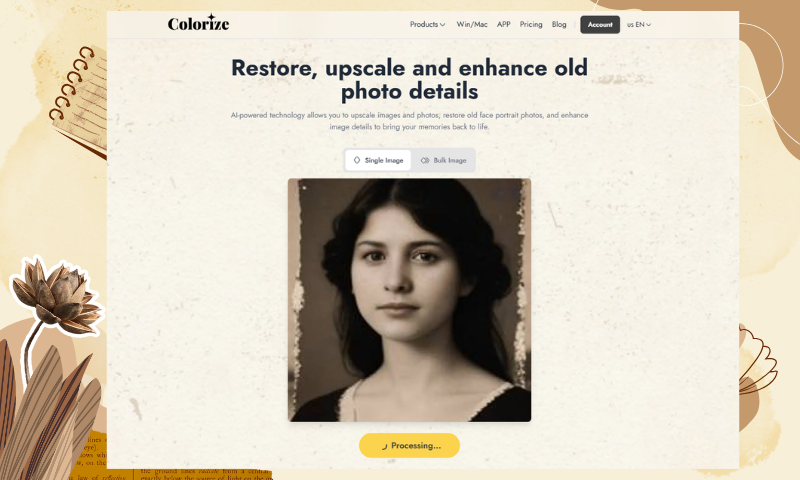
- Step 3: Wait for the process to finish. Drag the line in the middle of the picture to compare the before-and-after effects. If you want to edit, click the pencil icon at the top right corner of the image to enter the editing page.
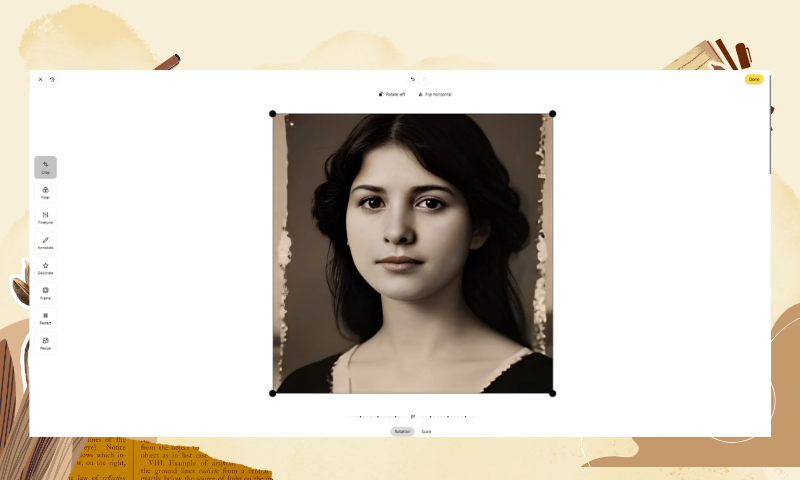
- Step 4: You can crop, rotate, adjust parameters, and add filters and frames. When you are done, click "Done" in the upper right corner to return to the bar page. Click the thumbnail in the lower left corner to save the edited image. Click "Download" to save the original image.
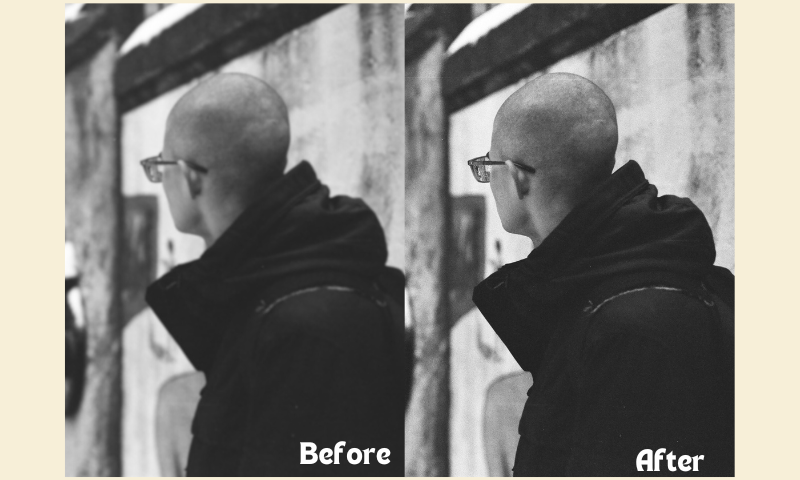
Adding Color to Black-and-White Photos
Colorizing black-and-white photos is a revolutionary way to breathe life into historical images, bringing a fresh perspective to the past. Whether you're working with old family portraits, historical photos, or vintage memories, adding color creates a powerful, modern experience.
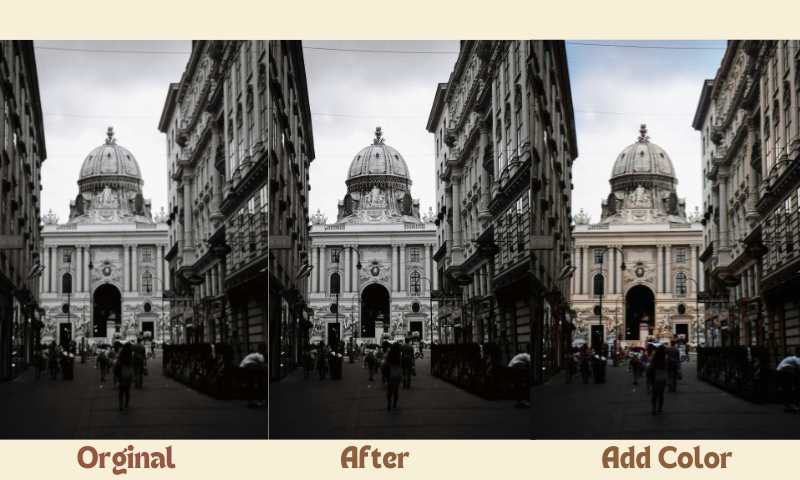
The Benefits of Colorizing Black-and-White Photos
- Enhanced Realism: Adding realistic hues to monochrome images helps bring them to life. By incorporating colors that match the natural palette of the scene, you can create a connection between the viewer and the past, making it feel more immersive and relatable.
- Aesthetic Appeal: Transform old, faded photos into visually stunning pieces of art. The vibrant colors provide an updated, fresh look that makes the image feel relevant and beautiful today.
- Emotional Impact: Colorization can make the viewer feel more engaged, evoking emotions and a deeper connection to the subjects in the photo.

AI Colorizer Imagecolorizer for Photo Colorization
To make the process easier and more accessible, AI-based tools like Imagecolorizer provide advanced algorithms to colorize black-and-white photos with incredible accuracy. These tools automatically detect details and intelligently add color, creating impressive results in no time.

Step-by-Step Guide to Photo Colorization
- Step 1: Enter the imagecolorizer's page and select "Colorize Black and White Photos" to enter the function of colorizing pictures.
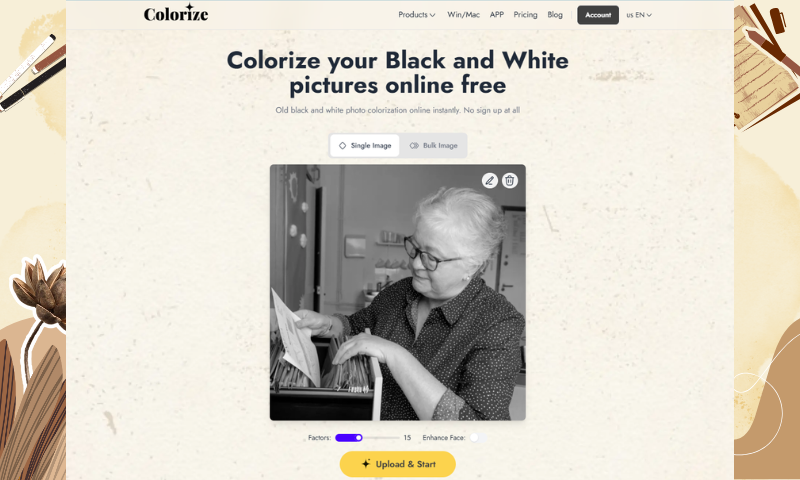
- Step 2: Drag and drop to upload the images you want to colorize; after uploading, you can drag the slider left and right to adjust the "Factor"; the bigger the number, the lighter the color. If there are people in the photo, you can also choose whether you want to enhance their faces or not. Click "Upload & Start" when the adjustment is finished.

- Step 3: Wait for a few seconds to finish the processing. You can see the coloring effect; if it is relative to the picture for editing, click on the upper right corner of the pencil icon. Rotate, crop and adjust the parameters and so on. Finished clicking on the upper right corner of the "Done" can be.

- Step 4: After finishing the editing, we will return to the page just now and download the original image by clicking the "Download" button below the picture. Save the edited image by clicking the download icon on the top right corner of the thumbnail.
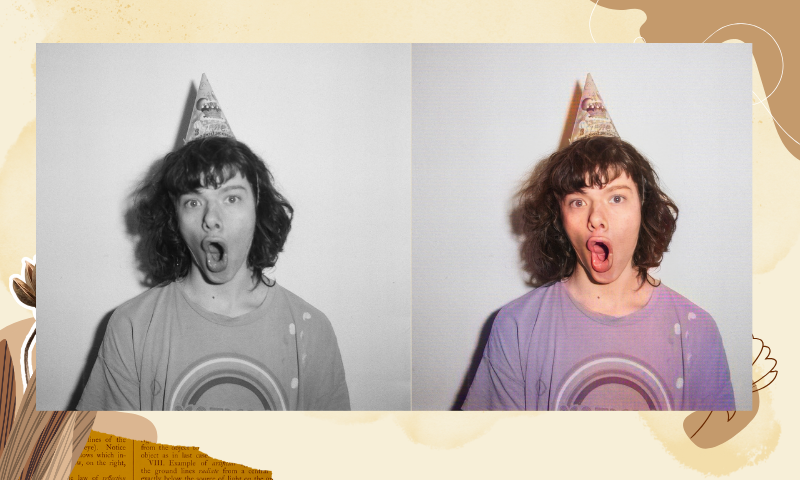
Printing and Displaying Your Restored Photos
After restoring and colorizing your photos, the next step is ensuring that your cherished memories are displayed in the best possible way. Whether you're printing physical copies for your home or sharing digital versions with family and friends, the presentation plays a crucial role in preserving the impact of your restored images.

Choosing the Right Paper and Printer for Quality Prints
- Paper Type: Choose high-quality photo paper that suits your desired finish. The glossy paper provides a shiny, vibrant effect, while matte paper gives a more subtle, elegant look. For archival quality, consider acid-free paper to prevent fading over time.
- Printer Selection: Ensure you use a high-resolution inkjet or laser printer for the sharpest, most accurate prints. Look for printers designed specifically for photo printing, as they typically support a wider color range and offer better detail reproduction.
- Ink Quality: Use premium inks intended for photo printing to maintain the vibrancy and longevity of the colors in your restored photos.

Tips for Framing and Displaying Restored Photos
- Choosing the Right Frame: Select a frame that complements the style and tone of your photo. Classic wood frames suit vintage photos, while sleek metal frames pair well with modern or colorized images. Consider the room's decor when making your choice.
- Glass or Acrylic Cover: Use UV-protective glass or acrylic to prevent the photo from fading due to sunlight exposure. This also protects against dust and physical damage.
- Placement: Display your restored pictures in areas where they won't be exposed to direct sunlight, as UV rays can degrade the quality over time. Consider creating a photo wall or gallery to showcase a collection of restored images.

Sharing Digital Copies with Family and Friends
- Email and Messaging Apps: Send high-resolution images via email or messaging apps to ensure that your family and friends can enjoy the restored photos on their devices.
- Social Media Sharing: Post your restored images on social media platforms, allowing others to admire and comment on your work. You can even create albums or collections to make it easier to view and share.
- Cloud Storage: Upload your restored photos to cloud services like Google Photos, Dropbox, or iCloud. This allows easy access and sharing with anyone, anywhere, while keeping the originals safe from data loss.
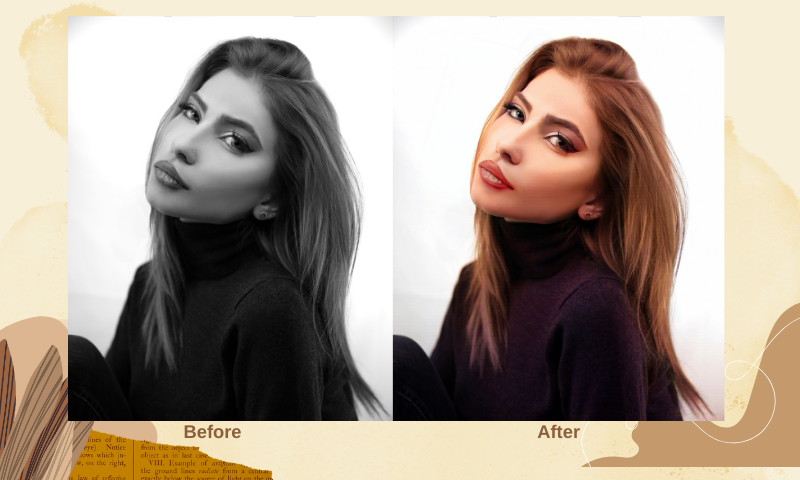
Conclusion
Restoring and coloring old photos is more than just a technical process; it's an emotional journey. Each repaired crack and added color breathes life into moments once thought lost. With the right tools and a little patience, anyone can revive their cherished memories and create a bridge to the past. So, what are you waiting for? Bring your memories back to life today!
